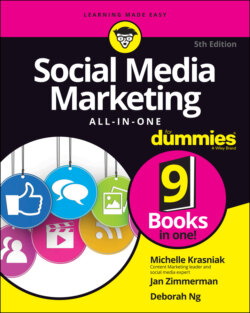Читать книгу Social Media Marketing All-in-One For Dummies - Michelle Krasniak - Страница 34
Comparing the costs of customer acquisition
ОглавлениеYou may want to delineate CAC for several different revenue streams or marketing channels: consumers versus businesses; products versus services (for example, software and support contracts); online sales versus offline sales; and consumers versus advertisers. Compare each one against the average CAC for your company overall. The formula is simple:
customer acquisition cost = marketing cost ÷ number of leads
Be careful! This formula can be misleading if you calculate it over too short a time frame. The CAC may be too high during quarters that you undertake a new activity or a special promotion (such as early Christmas sales or the introduction of a new product or service) and too low during quarters when spending is down but you reap benefits from an earlier investment in social media.
Calculate your CAC over six months to a year to smooth out unique events. Alternatively, compute rolling averages (taking an average over several months at a time, adjusting the start date each month — January through March, February through April, March through May, and so on) to create a better picture of what’s going on.
In Figure 2-1, Rapport Online ranks the return on investment, defined as cost-effectiveness in generating leads, for a variety of online-marketing tactics. The lowest ROI appears at the bottom of the cube, and the highest appears at the top.
Courtesy of Rapport Online Inc., ROI
FIGURE 2-1: Social media would fit near the top of the ROI scale for Internet-marketing tactics.
Social media marketing runs the gamut of rapport-building options because it involves some or all of these techniques. On this scale, most social media services would probably fall between customer referral and SEO or between SEO and PR/link building, depending on the type and aggressiveness of your effort in a particular marketing channel. Traditional offline media, by contrast, would have a lower ROI than banner advertising.
As with performance metrics, business metrics such as CAC and ROI aren’t perfect. If you track everything consistently, however, you can at least compare results by marketing channel, which can help you make informed business decisions.
If you garner leads online but close your sales and collect payments offline, you can frame CAC as the cost of lead acquisition, recognizing that you may need to add costs for staff, collateral, demos, travel, and other items to convert a lead.
To put things in perspective, remember that the traditional business school model for offline marketing teaches that the CAC is roughly equivalent to the profit on the amount a customer spends during the first year.
Because you generally see most of your profits from future sales to that customer, you must also understand the lifetime customer value (how much and how often a customer will buy), not just the revenue from an initial sale. The better the customers, the more it’s worth spending to acquire them. Harvard Business School offers an online calculator for determining lifetime customer value at http://hbswk.hbs.edu/archive/1436.html.
Be sure that the cost of customer acquisition (CAC) doesn’t exceed the lifetime customer value.
Try to keep the total cost of marketing by any method at 6 percent to 11 percent of your revenues; you can spend less after you have an established business with word-of-mouth referrals and loyal repeat customers. Remember, customer acquisition is only part of your total marketing budget; allow for customer retention and branding expenses as well.
Small businesses (fewer than 100 employees), new companies, and new products usually need to spend toward the high end of the scale on marketing initially — perhaps even more than 11 percent. By comparison, mature, well-branded product lines and companies with a large revenue stream can spend a lower percentage on marketing.
Obviously, anything that can reduce marketing costs offers a benefit. See whether your calculation bears out that cost level for your investment in social media.
